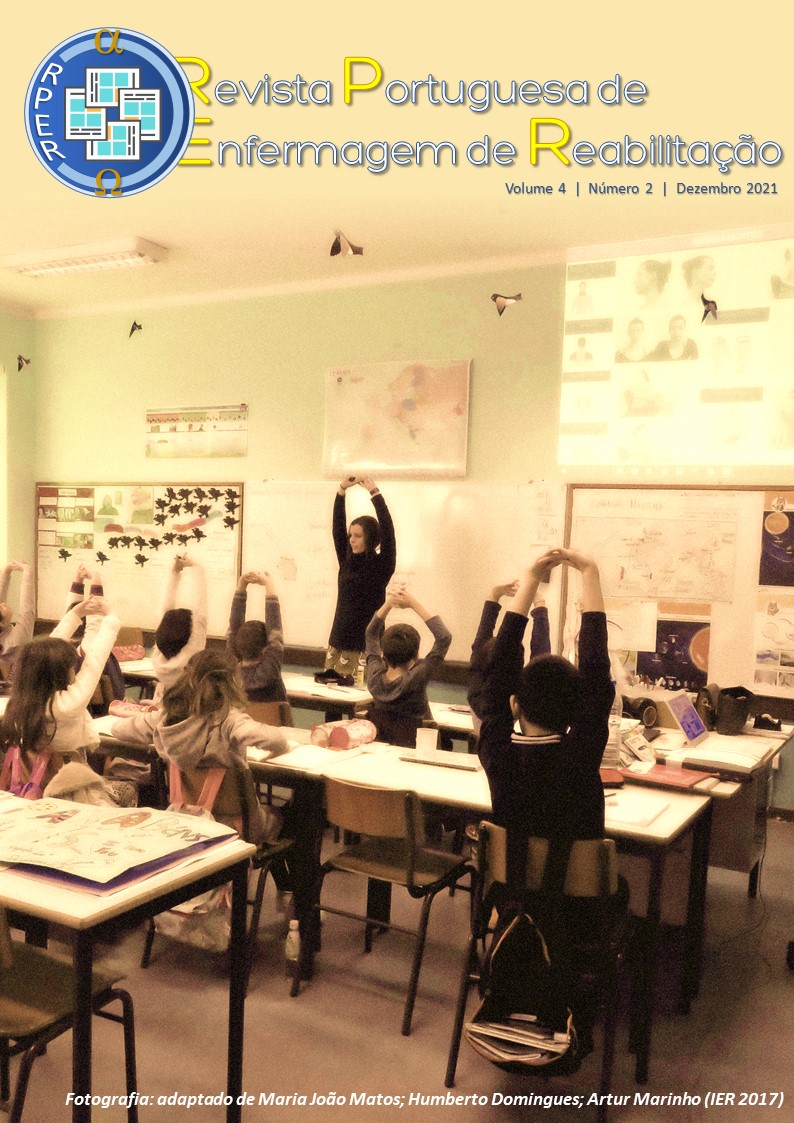Abstract
Introduction: The assistance activity of respiratory rehabilitation was, in most countries, interrupted due to the pandemic caused by COVID-19. COVID-19 is a multisystem disease that can progress to acute respiratory failure syndrome, which can lead to serious sequelae. It is estimated that the survivors' sequelae could dominate clinical
practice for years to come.
Objective: To identify the main contributions to clinical practice in Respiratory Telerehabilitation in Pandemic.
Methodology: Critical-reflective methodology, in which contributions from selected articles.
Reflection Development: Starting early the post-hospital rehabilitation, before patients develop severe or limited ventilatory incapacity, is extremely important. Respiratory rehabilitation is an ongoing iterative process that requires
frequent monitoring of the patient's functional capacity, used to guide and adjust treatment and care based on their progress. Its objectives are to reduce complications, minimize disability, preserve functionality, improve symptoms
of dyspnea, anxiety, depression and improve quality of life. Telehealth and Telerehabilitation can be essential tools in providing care to these people.
Conclusion: Telehealth and Telerehabilitation as digital practice tools can be fundamental allies in the implementation of respiratory rehabilitation programs, not only in times of suspension of in-person care activities, but also in order to improve access to differentiated health care and management of health resources.
References
1. Vitacca M, Lazzeri M, Guffanti E, Frigerio P, D’Abrosca F, Gianola S, et al. Italian suggestions for pulmonary rehabilitation in COVID-19 patients recovering from acute respiratory failure: results of a Delphi process. Monaldi Arch chest Dis = Arch Monaldi per le Mal del torace. 2020 Jun;90(2). Available from: https://doi.org/10.4081/monaldi.2020.1444
2. Salawu A, Green A, Crooks M, Brixey N, Ross D, Sivan M. A Proposal for Multidisciplinary Tele-Rehabilitation in the Assessment and Rehabilitation of COVID-19 Survivors. Int J Environ Res Public Health. 2020 Jul;17(13):4890. Available from: https://doi.org/10.3390/ijerph17134890
3. Sánchez A, Fragoso A., Álvarez J, Hernández M, Moriano A, López B. Efectiveness of Virtual Reality Systems to Improve the Activities of Daily Life in Older People. Int J Environ Res Public Heal. 2020;(17):6283.
4. Zhonghua, Jie, He, He, Hu, Xi, et al. [Recommendations for respiratory rehabilitation of coronavirus disease 2019 in adult]. Chinese J Tuberc Respir Dis. 2020 Apr;43(4):308–14. Available from: https://doi.org/10.3760/cma.j.cn112147-20200228-00206
5. Kim J, Heo J, Kim H, Song S, Park S, Park T, et al. Neurological Complications during Treatment of Middle East Respiratory Syndrome. J Clin Neurol. 2017 Jul;13(3):227–33. Available from: https://doi.org/10.3988/jcn.2017.13.3.227
6. Hanlon P, Daines L, Campbell C, McKinstry B, Weller D, Pinnock H. Telehealth Interventions to Support Self-Management of Long-Term Conditions: A Systematic Metareview of Diabetes, Heart Failure, Asthma, Chronic Obstructive Pulmonary Disease, and Cancer. J Med Internet Res. 2017 May;19(5):e172. Available from: https://doi.org/10.2196/jmir.6688
7. Stam H, Stucki G, Bickenbach J. Covid-19 and Post Intensive Care Syndrome: A Call for Action. J Rehabil Med. 2020 Apr;52(4):jrm00044. Available from: https://doi.org/10.2340/16501977-2677
8. Barker-Davies R, O´Sullivan O, Senaratne K, Baker P, Cranley M, Dharm-Datta S, et al. The Stanford Hall consensus statement for post-COVID-19 rehabilitation. Br J Sports Med. 2020 Aug;54(16):949 LP – 959. Available from: https://doi.org/10.1136/bjsports-2020-102596
9. Yang L, Yang T. Pulmonary rehabilitation for patients with coronavirus disease 2019 (COVID-19). Chronic Dis Transl Med. 2020 Jun;6(2):79–86. Available from: https://doi.org/10.1016/j.cdtm.2020.05.002
10. Siddiq M, Rathore F, Clegg D, Rasker J. Pulmonary Rehabilitation in COVID-19 patients: A scoping review of current practice and its application during the pandemic. Turkish J Phys Med Rehabil. 2020 Nov;66(4):480–94. Available from: https://doi.org/10.5606/tftrd.2020.6889
11. Wang T, Chau B, Lui M, Lam G, Lin N, Humbert S. Physical Medicine and Rehabilitation and Pulmonary Rehabilitation for COVID-19. Am J Phys Med Rehabil. 2020 Sep;99(9):769–74. Available from: https://doi.org/10.1097/PHM.0000000000001505
12. Olivo C, Miyaji E, Oliveira M, Almeida F, Lourenço J, Abreu R, et al. Aerobic exercise attenuates pulmonary inflammation induced by Streptococcus pneumoniae. J Appl Physiol. 2014 Nov;117(9):998–1007. Available from: https://doi.org/10.1152/japplphysiol.00290.2014
13. Devan H, Hale L, Hempel D, Saipe B, Perry M. What Works and Does Not Work in a Self-Management Intervention for People With Chronic Pain? Qualitative Systematic Review and Meta-Synthesis. Phys Ther. 2018 May;98(5):381–97. Available from: https://doi.org/10.1093/ptj/pzy029
14. Horler C, Hebron C, Martyn K. Personalizing education: The clinical reasoning processes of physiotherapists using education for the treatment of people with chronic low back pain. Physiother Theory Pract. 2020 May;1–10. Available from: https://doi.org/10.1080/09593985.2020.1765437

This work is licensed under a Creative Commons Attribution-NonCommercial-NoDerivatives 4.0 International License.
Copyright (c) 2021 Portuguese Rehabilitation Nursing Journal
Downloads
| Abstract Views | 797 |
|---|
| (Português (Portugal)) | 353 |
|---|
| PDF (Português (Portugal)) | 353 |
|---|
| HTML (Português (Portugal)) | 78 |
|---|





